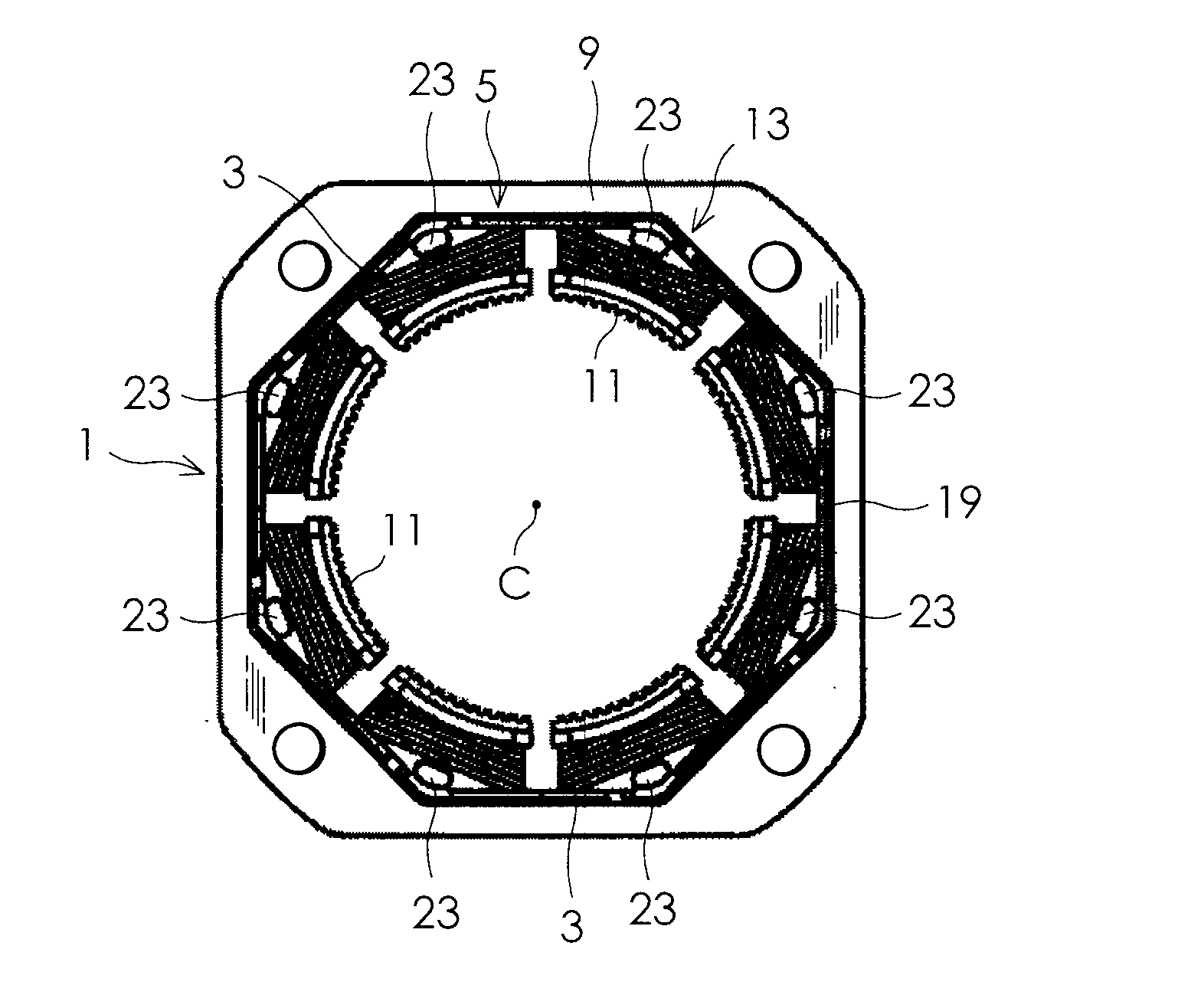Stator for rotary electric machines
a technology of rotating electric machines and rotors, which is applied in the direction of windings, magnetic circuit shapes/forms/construction, windings, etc., can solve the problems of reducing the volume of the winding portion in the slot, affecting the speed of the winding, and the movement of the nozzle, so as to reduce the dimension, simplify the arrangement or formation of the connecting wire, and compact in size
- Summary
- Abstract
- Description
- Claims
- Application Information
AI Technical Summary
Benefits of technology
Problems solved by technology
Method used
Image
Examples
Embodiment Construction
[0024]An embodiment of the present invention will now be described in detail with reference to the accompanying drawings. FIGS. 1 and 2 are respectively a plan view and a back view of a stator for rotary electric machines of one embodiment of the present invention. FIG. 3 is an illustration showing the stator of FIG. 1 wherein an after-mentioned winding portion 3 is omitted. FIG. 4 is a sectional view taken along line IV-IV of FIG. 3. As shown in each figure, the stator for rotary electric machines of the present embodiment comprises a stator core 1, eight winding portions 3, a slot insulators 5, and a circuit substrates 7. The stator core 1 includes an annular yoke 9 and eight magnetic pole sections 11. The eight magnetic pole sections 11 are disposed integrally with the annular yoke 9 on an inner circumferential portion of the annular yoke 9, at intervals in a circumferential direction of the annular yoke 9, and protruding toward a centerline C of the annular yoke 9. The stator co...
PUM
 Login to View More
Login to View More Abstract
Description
Claims
Application Information
 Login to View More
Login to View More - R&D
- Intellectual Property
- Life Sciences
- Materials
- Tech Scout
- Unparalleled Data Quality
- Higher Quality Content
- 60% Fewer Hallucinations
Browse by: Latest US Patents, China's latest patents, Technical Efficacy Thesaurus, Application Domain, Technology Topic, Popular Technical Reports.
© 2025 PatSnap. All rights reserved.Legal|Privacy policy|Modern Slavery Act Transparency Statement|Sitemap|About US| Contact US: help@patsnap.com



